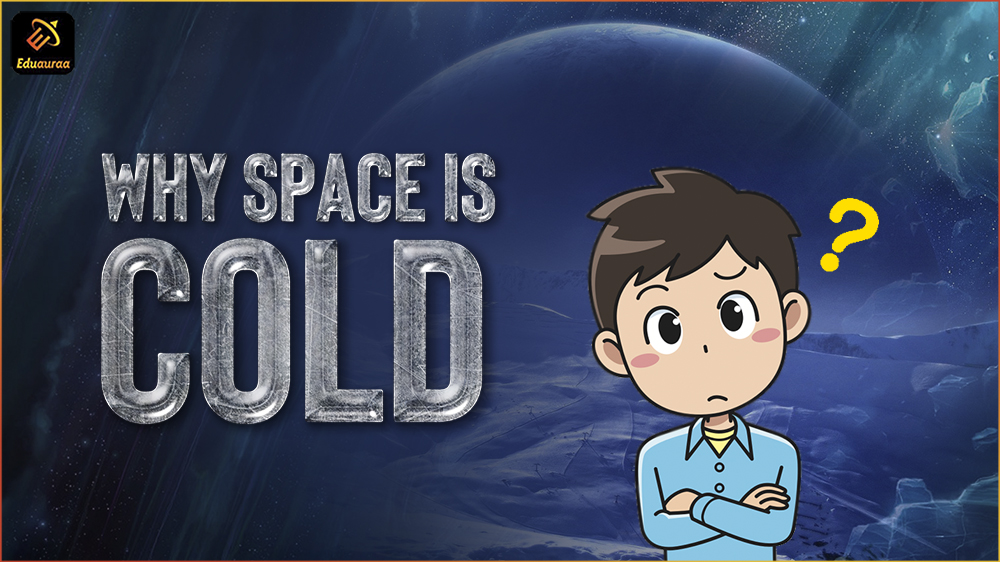Why is space cold

The fascination with space is a very common thing among people nowadays.
Space is the new tourist destination for most of us on this planet and people are moving quickly to find ways to what's outside.
Yet, we need to make sure that we carry the correct gear to travel outside.
One of the biggest problems with this is the temperature of outer space. Well, in simple terms, it is really cold outside.
One line answer
To simply answer this question, the main reason outer space is cold is that there is no source of heat nearby to make it warmer.
Hypothetical analysis
If we end up in space, especially on the side of the sun, we might end up burning up really bad as that side gets really hot.
The cause is obvious to this.
The side facing the sun contains energy that is close enough and intense enough to burn one to ashes.
Moreover, without the protective layers of the Earth, the sunlight is way harsher on our skin and our whole body in general.
Now, on Earth, if you put something out in the sun, it warms up.
The air picks up some of that warmth and rises, and the resulting current wicks heat away.
In space, things work a lot differently and none of this happens.
Space is like a giant thermos, a perfect insulator.
Due to this reason, we won't end up burning up as we do on earth.
However, in reality, the space around our planet isn't quite a perfect insulator after all.
Things in space do not end up cooling off by the method of thermal conduction.
Rather things in space cool off by radiating infrared light.
All objects do this, and they radiate more the hotter they get.
That’s why say we place a hypothetical truck in space, it would not end up melting.
When it gets hot enough, it starts radiating enough infrared (like a space heater) to stop warming any further.
At our distance from the sun, that temperature is about 250 degrees Fahrenheit.
At the distance of Mercury, it’s about 800 degrees Fahrenheit.
Meanwhile, the shaded side of our truck is emitting infrared light too—just at a slower rate.
Insulated by vacuum, it will cool down much more slowly than the sunlit side heats up, but since there is no energy coming in, it will keep on cooling down until it gets very cold indeed.
However, we must remember that all these are hypothetical situations as in real life all these processes won't be so neat and methodical.
Our truck would be tumbling all over the place so neither side will have enough time to fully heat up or cool down.
This idea was used during the Apollo program, where the large, cylindrical Service Module was frequently set into a gentle rotation to keep the temperatures even.
Explanation
Objects also have the property of conducting heat internally so that the shadowed side of an object sitting in the sunlight near Earth might cool down to only -250 degrees Fahrenheit, whereas at the orbit of Pluto, it might be more like -360 degrees.
This all comes into crucial play for people who design and make spacecraft for travel.
We must keep in mind that aircraft have a hard time staying warm and cozy. All this is very important to spacecraft designers.
From the sun out to about the orbit of Mars, it always faces some trouble.
Hence to avoid such occurrences, they get wrapped in materials that are reflective for protection T from the sun and given radiators or other systems to help get rid of the heat generated by their systems.
At about the orbit of Mars, however, staying warm starts becoming a problem, so much so that the first Mars rover, Sojourner, carried a plug of plutonium 238 inside the little thermos container that housed its computer just to keep the electronics from freezing.
Another reason that space is seemingly cold is due to the fact that it is so vast and empty.
Any object placed in space can end up radiating a limitless amount of energy in all possible directions.
If there is no sun nearby to warm these objects up, they will eventually end up losing almost all their heat and grow very cold.
Heat transfer and outer space
Temperature is a function of heat energy in a given amount of matter in thermodynamic terms, and space has no mass by definition.
We must also remember that heat transfer does not occur in space as two out of three ways of transfer require matter, that is, convection and conduction.
Conduction, convection, and radiation are all effective ways for the Earth's atmosphere to circulate the sun's heat.
Hence space is cold as the heat transfer we experience on Earth does not happen in outer space.
Will we freeze in space?
There is a common misconception that every human would freeze and explode when they come in contact with the vacuum of space.
This is untrue as space itself does not have any temperature.
The bigger concern is the absence of normal atmospheric pressure that impacts an individual way more than the vacuum of space.








